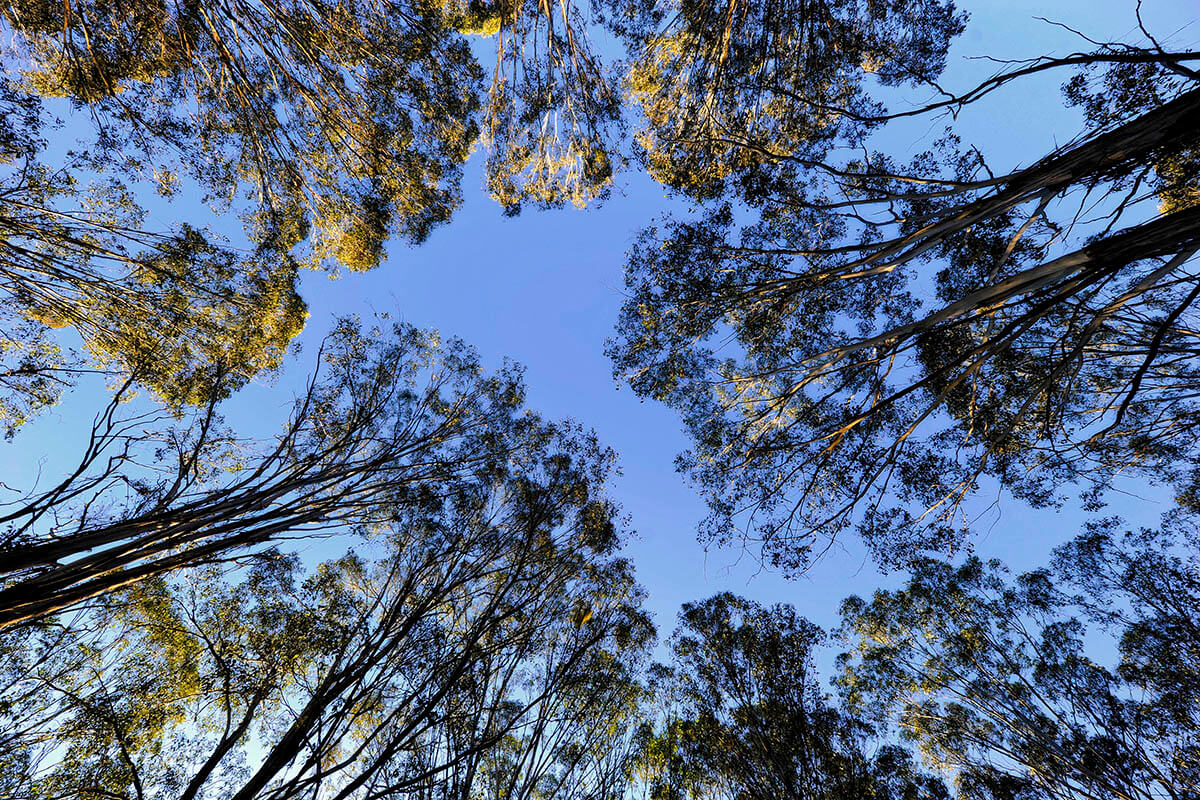Mapping Greater Sydney’s tree canopy supports more targeted green infrastructure planning and investment and helps to inform the delivery of new sustainable housing.
2022 tree canopy data
The department has worked with ArborCarbon to acquire a new tree canopy dataset for Greater Sydney that provides the most in-depth and detailed tree canopy imaging released by the department to date.
The 2022 canopy dataset covers the Metropolitan Urban Area and Metropolitan Rural Area of Greater Sydney and shows:
- canopy cover
- tree height
- vegetation health
- land surface temperature
- individual trees.
This new data allows Greater Sydney councils and the NSW Government to make more informed urban sustainability and green infrastructure decisions across Greater Sydney. It also provides us with an update of Greater Sydney’s canopy cover, to track progress towards the goal of 40% tree canopy cover by 2036.
This latest update shows Greater Sydney’s tree canopy has increased from 21% in 2019 to 21.7% in 2022, with the most gains in Central and Western Sydney local government areas. These gains align with recent government investment in urban greening programs, which have prioritised the hottest areas in Greater Sydney.
Accessing and understanding the data
As with previous canopy datasets, the department has made a version publicly available on the NSW Government’s SEED portal. This version shows tree canopy and vegetation cover and is summarised (to modified mesh block) to protect ArborCarbon’s IP and ensure broad comparability to previous canopy datasets published on SEED. The 2016 and 2019 datasets also remain on the portal, noting that care is needed when comparing summary statistics across years (as outlined in the data analysis section below).
The 2022 canopy dataset will also be integrated with Land iQ, which is accessible to all NSW Government agencies with a licence.
The detailed 2022 canopy data can be accessed by:
- Greater Sydney councils through the Green Infrastructure User Interface, which allows users to view and analyse the new data
- NSW Government employees
- external organisations contracted to councils or NSW Government (subject to Department assessment and approval).
If you’re interested in accessing the granular 2022 Greater Sydney canopy dataset, submit a registration form on the NSW Planning Portal.
More information
This data acquisition is part of the department’s urban greening programs, which include a range of partnerships and projects such as Greener Neighbourhoods, to help councils strategically plan for and manage urban forests in their local government areas.
The Green Infrastructure User Interface is a spatial tool developed by ArborCarbon to help councils analyse green infrastructure data for their local government area.
The interface can view and analyse data at different scales and for different boundary areas, and includes complementary datasets such as land surface temperature, vegetation condition and land zoning layers.
Users can also download the 2022 canopy dataset from the interface to use in other GIS mapping software.
Greater Sydney councils can sign up to access the user interface for free until April 2025. NSW Government employees interested in accessing the user interface for green infrastructure data analysis can also express interest in using the interface by filling out the above form. The department is considering options for long-term access to a user interface and this will be informed by feedback on the tool currently available to councils and NSW Government agencies.
The 2022 canopy data is also available through other spatial platforms, including the ePlanning Spatial Viewer and Land iQ.
The department engaged consultants, ArborCarbon, to acquire canopy data across Greater Sydney. The canopy data is based off aerial imagery with a resolution of 0.48m, captured using ArborCarbon’s unique camera called ArborCam.
ArborCam is specifically designed for vegetation remote sensing, including having narrow spectral bands, picking up more detail and allowing the data to show very small changes in vegetation over time.
AI image analysis technology is then applied to the imagery to accurately extrapolate canopy cover and vegetation data.
The department has published statistics from the 2022 canopy dataset showing canopy cover at the Local Government Area (LGA) and suburb scale, for the Metropolitan Urban Area of Greater Sydney. An updated analysis has also been completed for the 2019 canopy dataset using the same analysis boundaries.
The statistical analysis has been published for the Metropolitan Urban Area as this is the geographic area where the department has analysed canopy imagery for 2016, 2019 and 2022, enabling comparison across canopy datasets.
The department’s canopy datasets for 2016, 2019 and 2022 were captured and processed using different methods, technologies and resolutions. Care should be taken when comparing canopy cover between datasets, especially in LGAs with a lower proportion of Metropolitan Urban Area, as some observed differences may be a result of variations in methodologies rather than actual change in canopy cover.
- Undertake analysis at different scales to inform statutory planning (including tree planting and removal on private property during development assessment) and strategic planning (including urban forest strategies, street tree master plans and local strategic planning statements).
- Undertake canopy baselining and green infrastructure needs assessments for major projects, precinct planning and infrastructure sites.
- Identify priority planting locations by combining hot spot analysis with canopy cover data.
- Understand how tree canopy is tracking over time.
- Understand how tree canopy interacts with development and infrastructure to inform long term planning and maintenance.
The 2022 canopy dataset was informed by feedback from Greater Sydney councils and is a move towards best practice green infrastructure data provision for the NSW Government.
Future canopy data acquisitions are also planned for 2024 and 2026 and priority will be placed on ensuring comparability with previous datasets.
All data acquired by the department complies with departmental privacy guidelines and practices.
